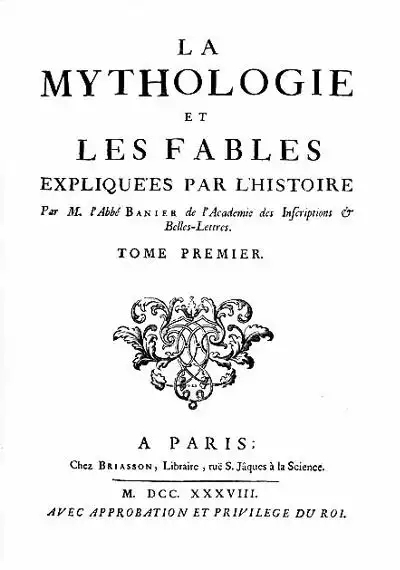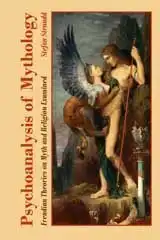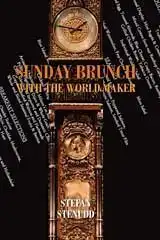Abbé Antoine Banier:
|
by Stefan Stenudd |
Antoine Banier (1673-1741) was a French abbé, member of the Académie des Inscriptions et Belles-Lettres, whose writing on mythology was widely spread. He argued for the principle of euhemerism, which is the term for theories about myths having an origin in actual history. It is named after the 3rd century BC Greek writer Euhemerus, who was the first to present such a theory. Abbé Banier, too, explained the myths as distortions of actual history:
The System of those, who reduce Fables to ancient History, though disfigur'd by the Poets, who were the first Historians: a System that appears most relish'd at this day, and which I have been encourag'd to embrace. [Antoine Banier, The Mythology and Fables of the Ancients, Explain'd from History, vol. 1, London 1739 (anonymous translation, first published in French as La Mythologie et les fables expliquées par l'histoire, 1738), 12f.]
The distorsion he explained as due to:
all those Ornaments that were superadded to them by After-ages, either to make them more venerable, because they were a part of Religion, or more surprising, because it is natural for Man to delight in the Marvellous. [Banier 1739, 13.]
Although he favors this understanding of myths, he makes it clear that it cannot safely be applied to all mythology. There are "no general Rules that will serve for all Occasions." [Banier 1739, 8.] He goes through a handful of old and recent theories about the nature of mythology, dismissing them all but completely.
There were the Platonic philosophers claiming that "Fables were but Allegories, that wrap'd up grand Mysteries," others found the keys in Egyptian hieroglyphics or "equivocal" words of the Phenician language, and some regarded it all as "Scripture misunderstood." Although he admits there may be some little truth to such theories, Banier is firm in his conclusion:
Certain it is, that Truth did not rise out of Error, but that Truth itself, by being misunderstood, gave rise to that multitude of Fables, by which almost the whole World has been seduced for many ages. [Banier 1739, 11.]
Alhtough Banier mostly discusses Greek mythology, he also touches on other ancient traditions such as those of the Egyptians and the Chaldeans, even Chinese and Indian ones. He also has a chapter on the theogony of Native Americans, using the French Jesuit missionary Lafitau as the source. [Joseph-François Lafitau, Moeurs des Sauvages Amériquains, Comparées aux Moeurs des Premiers Temps, 1724.]
In spite of Lafitau's voluminous documentation, Banier begins the chapter: "We are not to imagine that the Savages of America, a wandering and unsettled Race, ever apply'd themselves to form a System of Religion. There are however, Traditions to be found among some of them, which may form a kind of Theogony." [Banier 1739, 140.]
He continues by presenting an Iroquois creation myth, which he regards as "undoubtedly a Remnant of the Primitive History of the World, of Eve banish'd from the terrestrial Paradise, and of the murder of Abel and Cain." [Banier 1739, 140f.]
To other eyes than those of Banier the link to Genesis may not be equally convincing, although a couple of similarities stick out. Here is the Iroquois creation myth in its entirety, as told by Banier:
In the beginning, say they, there were six Men, (the People of Peru and of Brasil agree upon the same number;) as yet there being no Earth, these men were carried in the Air at the mercy of the Winds. Having no Women, they foresaw that their Species would soon come to an end; but having got notice there was one in heaven, they resolved that one of them, named the Wolf, should transport himself thither. The Enterprize was difficult and dangerous; but the Birds wasted him up thither upon their Wings. Being arrived there, he waited till the Woman came out, as her way was, to draw water. So soon as she appeared, he offered her some Present and seduced her. The Lord of Heaven, knowing what had happen'd, banished the Woman, and a Tortoise received her upon its Back. The Otter and the Fishes drawing up Mud from the bottom of the Water, formed of the Body of the Tortoise a small Island, which grew greater and greater by degrees; and such, according to these Savages, is the Original of our Earth.
This Woman at first had two Sons, of whom the one, who was arm'd with offensive Weapons, slew his Brother who had none. She was afterwards deliver'd of several Children; from whom the rest of Mankind are sprung. [Banier 1739, 140.]
Abbé Banier is first and foremost an abbé. He doesn't consider any other explanation to the few similarities than that the fragments of memories remaing with the Iroquois are of the creation as it must have taken place, since the Bible reports it so.
Also, the abbé considers the mythologies, although based on historical facts, as having deteriorated into idolatry and superstitions born out of it. He is convinced that at the beginning mankind knew and worshipped only one god, the creator of the world as well as of the first man Adam. [Banier 1739, 162.]
He searches the Bible for clues as to how idolatry began, and states about the initial nature of it: "I am persuaded, that Idolatry began by the Worship of the Heavenly Bodies, and especially of the Sun." [Banier 1739, 182.] His reason for this is that people were reluctant to choose men like themselves as objects of adoration, whereas the heavenly bodies were "more capable of seducing them," especially the sun with its bright splendor and its evident effects of worldly life. [Banier 1739, 182f.]
Indeed, the heavenly bodies are prominent in countless mythologies, and the sun is certainly not counted the least of them. The mysterious moving lights in the sky have intrigued mankind for as long as we have any records of what might have occupied people's minds. Not only in Greek mythology do they share their names with gods. They figure in all kinds of myths, also those of creation where they often play major parts.
Banier continues this evolution of idolatry, giving the next step as a worship of other material objects, such as the heavens, the elements, rivers and mountains, thirdly and "last of all to the Worship of Men, whom they raised to the rank of Gods." [Banier 1739, 193.]
He was to be followed with similar ideas of the evolution of mythology by later writers of the subject. Nor was he the first with such thoughts on mythology. The question of the order in which worship developed is still discussed in the history of religion and other disciplines studying myth and religion.
NEXT
Eusebius: Myths as Heathen Remnants.
Mythology Meanings Menu
- Introduction
- Mythology and Fable in the First Encyclopedia: Louis de Jaucourt
- Thomas Blackwell: Instruction by Fable
- Antoine Banier: Mythology as Idolatry
- Eusebius: Myths as Heathen Remnants
- Plutarch: Battle of Daemons
- Euhemerus: Myth as Actual History
- A Scientific Revolution of Mythology
- Andrew Lang: Rational versus Irrational
- Max Müller: Disease of Language
- Edward B. Tylor: Animism Turned Personification
- James G. Frazer: Myth as Ritual
Some of My Books:Click the image to see the book at Amazon (paid link).
The Greek philosophers and what they thought about cosmology, myth, and the gods. |
MENU
Creation Myths Around the World
How stories of the beginning began.
The Meanings of Mythology
Theories through history about myth and fable.
Archetypes in Myths
The mythological symbols and what they stand for.
The Logics of Myth
Patterns of creation.
CREATION MYTHS IN DEPTH
Creation in Rig Veda 10:129
The paradox of origin, according to an Indian myth.
Genesis 1
The first creation story of the bible scrutinized.
Enuma Elish
The ancient Babylonian creation myth.
Xingu Creation of Man
The insoluble solitude of gods and humans.
Contact
About Cookies
ON MY OTHER WEBSITES
Psychoanalysis of Myth
What Sigmund Freud and C. G. Jung thought about myths, their origins and meanings.
Myth of Creation
An introduction to the subject of creation myths and the patterns of thought they reveal.
Cosmos of the Ancients
What the Greek philosophers believed about the cosmos, their religion and their gods.
Life Energy
The many ancient and modern life force beliefs all over the world explained and compared.
Taoistic
Taoism, the ancient Chinese philosophy of life explained. Also, the complete classic text Tao Te Ching online.
 Stefan Stenudd
Stefan Stenudd
About me
I'm a Swedish author and historian of ideas, researching the thought patterns in creation myths. I've also written books about Taoism, the Tarot, and life force concepts around the world. Click the image to get to my personal website.

 Archetypes of Mythology
Archetypes of Mythology Psychoanalysis of Mythology
Psychoanalysis of Mythology Cosmos of the Ancients
Cosmos of the Ancients Life Energy Encyclopedia
Life Energy Encyclopedia Sunday Brunch with the World Maker
Sunday Brunch with the World Maker Fake Lao Tzu Quotes
Fake Lao Tzu Quotes